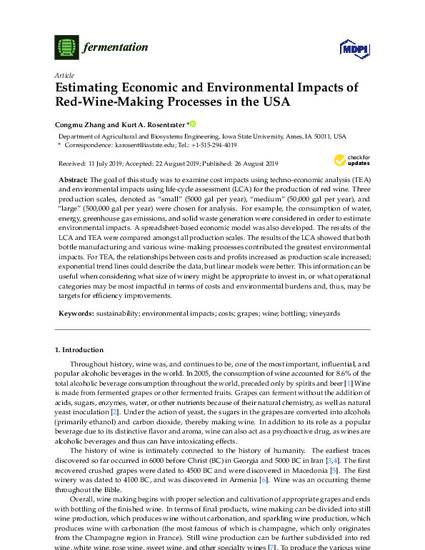
The goal of this study was to examine cost impacts using techno-economic analysis (TEA) and environmental impacts using life-cycle assessment (LCA) for the production of red wine. Three production scales, denoted as “small” (5000 gal per year), “medium” (50,000 gal per year), and “large” (500,000 gal per year) were chosen for analysis. For example, the consumption of water, energy, greenhouse gas emissions, and solid waste generation were considered in order to estimate environmental impacts. A spreadsheet-based economic model was also developed. The results of the LCA and TEA were compared amongst all production scales. The results of the LCA showed that both bottle manufacturing and various wine-making processes contributed the greatest environmental impacts. For TEA, the relationships between costs and profits increased as production scale increased; exponential trend lines could describe the data, but linear models were better. This information can be useful when considering what size of winery might be appropriate to invest in, or what operational categories may be most impactful in terms of costs and environmental burdens and, thus, may be targets for efficiency improvements.
Available at: http://works.bepress.com/kurt_rosentrater/344/

This article is published as Zhang, Congmu, and Kurt A. Rosentrater. "Estimating Economic and Environmental Impacts of Red-Wine-Making Processes in the USA." Fermentation 5, no. 3 (2019): 77. DOI: 10.3390/fermentation5030077 . Posted with permission.